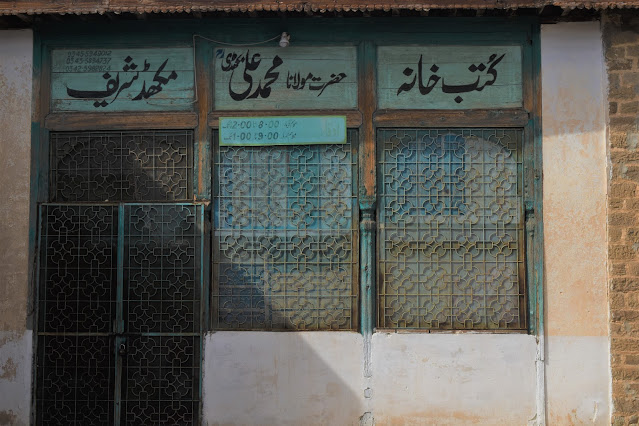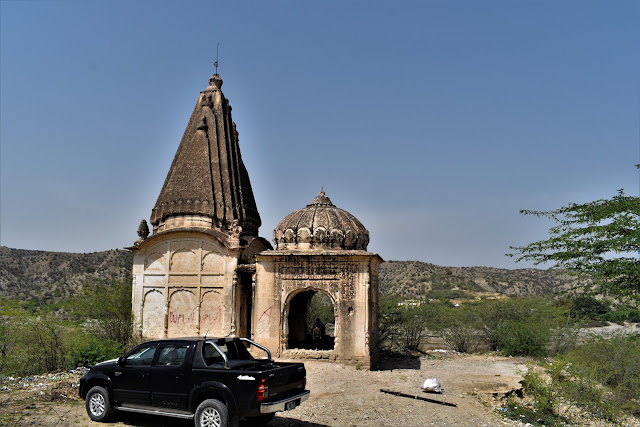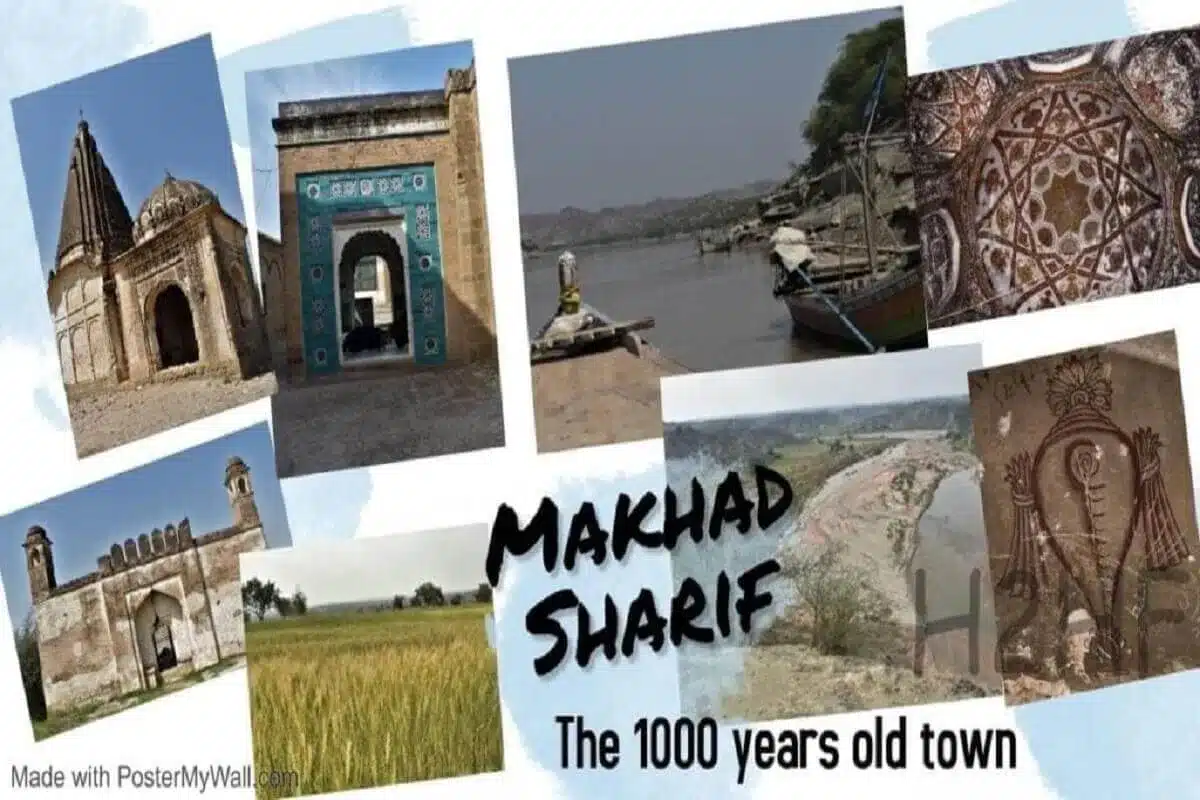Things to do at the historic town of Makhad Sharif, Attock
A road trip is the fastest way to get to the 1000 years old town of Makhad Sharif at the edge of the Attock district, Punjab – and I did exactly that.
Makhad Sharif was originally just “Makhad” (deep ditch).

Table of Contents
ToggleThe Pir Shrines of Makhad Sharif
The “Sharif” label comes from the reverent followers of several Pir Shrines of Makhad
- Haji Peer Qasim Ali Shah Lakhnao wala
- Hazrat Noori Badshah
- Peer Chan Chiragh
- Molvi Saleh Gul Darbar and
- Molana Muhammad Ali Chishti (the most well-read of them all)

Makhad Sharif location Map
Makhad Sharif is the border town between Northern Punjab and Khyber-Pakhtunkhwa, separated by the river Indus.

This town’s purpose was to be a crossing point for trade caravans moving across the Indus River (Darya e Sindh) to and from India toward Central Asia.
Religious scholars, business class, and Hindu inhabitants came afterward.
Also, see Things to do in

The History of Makhad Sharif
Because this town is remote, in a bowl-shaped valley, far from any major town center, I do not think it has been continuously inhabited over the centuries.
However, there is evidence to show that there are Buddhist remains 25 Kms South-West from the current town center.
The local legend says that Makhad Sharif was converted to Islam during Mahmood Ghaznavi’s 1008 AD expedition.
Mahmood Ghaznavi’s general Qutb Shah is said to be the patriarch of the local influential family Tumman Awan. The word Tamman means “tribal center”
The other influential business family is the Piracha, who were converted from Hinduism several centuries back and have always been respectful of the Hindu class in the Indus Valley.
Pirachas have long since moved on to larger cities since Makhad has lost its former wealth first to train and then to the road network in Pakistan.
Even today, the Piracha family funds several schools and philanthropic activities in their home town.
In the 17th century, The British colonials formally gave the town its legal importance that it deserved by establishing
- a police station at Injira
- a boat bridge at Makhad
- a railway station at Injira and
- Magistrate power to the local Khan family in power.
The local Khan family even had a British bride to stay socially relevant, as was the custom in those days in all influential and ambitious rulers of the Indus valley.

My road trip to Makhad Shareef Attock
I drove to Makhad Sharif in my own car one shiny Summer day, in hot weather, and it took me 4 h to get there from Islamabad.
To get there quickly, you must join the motorway and exit immediately from the Fateh Jang interchange right after Tarnol Toll plaza and drive 3.5 h straight to Makhad Sharif Town, through Fateh Jang and Jand.
The only major rightwards turn is in the last 15 min when you drive from the main road toward Makhad town from Nakka Afghan.
All along the road are Arid Barani lands full of corn crops.
That’s odd considering the only Pakistani river, the Indus flows just a few kilometers westward from this place.

Makhadi Halwa of Makhad Sharif
I had tandoori lunch from the local open-air restaurant with doodh Patti tea and Makhadi Halwa after that to freshen up before proceeding ahead.
.

Injra town on CPEC
CPEC highway crosses a few kilometers south of this town at Injirah.
Injirah, by the way, means “lies on the way” in Punjabi – and it certainly does.
First up, I drove straight to the Mughal era stepwell “Baoli” at Budh town of Injera, a few kilometers ahead of CPEC interchange of the same name.
It makes perfect sense for the authorities to have built a watering hole for travelers coming up from Kalabagh town in this water-scarce country.

I can’t seem to figure out why has not the Pakistani government built a canal in this parched land?
After the well of Injra, I drove up to the old Railway station of Injira, which once handled cargo from central Asia and salt from Khewra.
Pakistan railways is an archeological wonder in itself since the century-old communication system is still in use there.

Driving back to Makhad Town
I started moving back North toward Makhad.
The complete terrain is rocky and undulating and even before entering the main town, I had to drive down from a hill.
The serenity of an isolated town is addictive. None of the noise, pollution, garbage and poverty that I see in cities was visible around Makhad.
In fact, I could see happy, content, educated and civilized faces all around.
Even the women seemed more emancipated and open to talk to strangers, unlike the scared and guarded women in cities.
As soon as I crossed over the last ridge headed toward Makhad Sharif, the beautiful town presented itself in full regale down below, with the mighty Indus River in the background.

Pir Shrines of Makhad Sharif
I could see the Hindu temple, blue Maktab shrine, and other Pirs’ (Muslim Saint) resting places all centered near the old bazaar.

All three famous shrines are right at the entrance of the town and each one of them has a huge burial ground where faithful from all around Attock considered it their sacred duty to visit the buried.

The shrine walls and roofs are decorated with the most exquisite motifs, frescos, and glasswork that I have ever seen anywhere in Pakistan.

This artwork is said to be at least 200 years old and still stands firm.

In case you are interested, the contact number of glass work artisans who worked on the dome of the beautiful Peer Lakhnao Wala Shrine is 03405011748 (Ahmad Googa Ustad)

I noticed that the old mosque in Makhad had a deep ablution pond, styled like Shrines are – it is different from what I have been accustomed to in the cities of Pakistan.

The blue tile work on the Muhammad Ali shrine stood out against the stark landscape, had clear indications of influence from Persia and Multan.

Trade on the Indus River
I was told in the olden days, trade caravans on boats would criss-crosswise to Sukkhar downstream of Makhad
I am sure artisans must have arrived with the cargo as well.

The vintage library of Muhammad Ali Shrine Makhad
This respected religious figure had his own collection of 1500 rare books that he donated to his disciples – I found it locked as no one reads books now.
This library also contains copies of original writings of Prophet Muhamad and Caliph Ali.

Town center of Makhad
I then moved to the ancient bazaar of Makhad and saw clean, well-maintained streets lined on both sides with huge Marhi “mansions.”
The mansions, shops, and buildings were built with expensive Diyar wood (Cedrus Deodar), which Makhad had many wealthy days.

The Diyar Wood was chopped In Kashmir and ensnared at the old harbor of Makhad Sharif when it floated through this place
Makhad Shareef was one of the places along the Indus River where the water leveled out and slowed down enough for the people to arrange a crossing.
The temperature that old bazar was several degrees cooler than the surrounding, despite the summer heat.
This change in temperature was because the complete Bazar, which was about a kilometer long was once covered from the top as well.
The streets were paved and had their own drainage system.

Famous Makhadi Halwa
I saw the famous Makhadi Halwa being prepared in this bazaar.
Makhadi halwa’s recipe has been passed down generations from the original Hindu inhabitants of Makhad.

The Khan of Makhad
At the very end of Makhad Bazar, is the mansion of the khan of Makhad, the same guy that married a white lady for influence.
The view from this mansion of the Indus River and its tributaries join it from this spot is breathtaking
The descendants of the old Khan still keep Afghan hounds in the memory of their ancestors, who had close ties to Afghanistan.
This Khan of Makhad was granted magistrate powers over his subjects and had a private jail of his own inside his palace once.
There was a time when the Indus River flowed a few feet below Khan of Makad’s mansion but is now at least 100 feet below the watermark.
Someone upstream is stealing this water
During the superfood of 2010, water came into this town and caused some damage.

The Khattak Pathan of Makhad
The funny thing I notice in Makhad bazar was that the people looked Punjabi but they had characteristic light eyes and feature like that of Pathan.
In fact, many residents were bilingual; they could easily speak Punjabi and Pushto together.
I was told the local Sagri Pathan are actually Bulaki Khattak from Shakardara, Kohat, a few kilometers westwards across the Indus River.
The local legend says that Khattak took over from the Local Awan family several centuries back and have been living in pocket called “Khattak Basti’ ever since.
I am lucky I remembered a few words of Pushto, as it helped me get better deals on things.
The lost wealth of Makhad
This place was so rich and full of wealth that people have been discovering currency notes from central Asia packed in sacks and placed in hidden chambers in the attic of houses.
The local tradition was to keep wealth hidden in pots sealed in the walls or the attic.
In 1947, the local Hindu community, which was significant in numbers, was given a safe passage by the Pir of Makhad to take their belongings to the e new country India.
The Hindu gold has made several families rich after 1947.

The trade harbor of Makhad
After seeing the Khan of Makhad’s Haveli, I climbed down from the old staircases to the harbor below, which once had several hundred docking points for trade ships.
The ancient wooden ship building industry has also gone.
The trade ships are no more, but did notice a rickety motor boat that would ferry tourists to Khyber Pakhtunkhwa and back.
There is not much to see on the other side, but the boat ride across this channel on Darya e Sindh is interesting.
Boat ride on the Indus River at Makhad
I took a long boat ride, up and down the Indus River, but did not cross over because there was nothing of serious interest on the other side.
I saw Migratory birds settle down on these calm waters, to gather strength before flying Northwards in summers.

Hindu Temple of Makhad Sharif
After the old harbor, I climbed up about 100 feet to the old Hindu Temple of Makhad, which people say is called Bala Nath Hindu Temple.
This temple was relatively well preserved because the Hindu keeper of the temple stayed back while everyone else left in 1947 and died a few decades back.
Even the Sanskrit writings on the temple walls and the painting of deity on the walls were still visible.
I was told that the Hindus of Makhad were quite in number before 1947 and friendly and were superb in business.
You know Makhad was a multifaith society, when the town center was named “Khuda ke basti,” now it had lot of filth and garbage lying around.
Makhad Hindus loved their gold and had a fascination of collecting many it in secret chambers in their homes, sometimes plastering it inside walls.

The emancipated and inclusive society of Makhad Sharif
My wife offered her prayer in the clean verandah of the local Saint Darbar and no one objected.
On the return journey when this lady tried entering a local mosque for ablution and was denied entry – now you tell me – has Pakistanis society progressed or regressed?
How can you collectively marginalize Pakistani women from worship places and hope to do well economically?
If there is one good thing, a democratic government can do immediately for public good is to tell the Council of Islamic ideology to allow women to perform ablution and pray inside any mosque of Pakistan and seek solace of Allah.
Why Pakistan should allow women to pray in mosques
Neither the Quran nor Prophet Muhammad has disallowed women from praying inside mosques.
- “do not prevent your women from going to the mosque” [Sahih Muslim]
Pakistan must take the lead for the rest of the Muslim world.
- Also see, Why the world hates Islam
On the return journey, we enjoyed grilled Rahu and barbecued Salmon fish from Akhorwal Restaurant Shahpur Dam, near Fatehjang.

Conclusion
I realized that Makhad Sharif had lost its strategic importance, and consequently its wealth, its intellect, like what is happening to Pakistan at the moment.
All the things of value left Makhad to go to where there were reciprocated – quite like Pakistan’s eventual fate.
I would highly recommend all Archeology, History and heritage lovers in Pakistan to go to Makhad Sharif before the crumbling town completely vanishes.
Do check out the Video of my trip to Makhad Sharif on my YouTube channel how2havefun, share and subscribe.

Thank you boss for taking us to Makhad Sharif. What a beautiful little town, tucked away in the middle of nowhere 👌
great job about the unknown about makhad sharif u made us memories of our childhood thank you